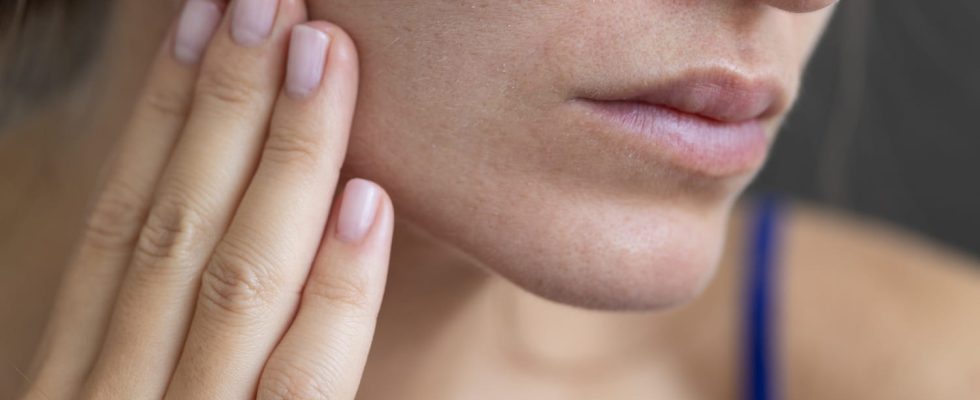Impetigo is a skin disease that mainly affects children but can also affect adults. In particular, it causes pimples on the face and presents a high risk of contagion. What are the treatments ?
Impetigo is a bacterial skin infection which particularly affects young children but can also affect adults. THE symptoms cutaneous appear especially at the level of the face. In cause, two bacteria: streptococcus and staphylococcus aureus. Is impetigo contagious ? Is it dangerous ? What treatments to cure it? Photoinformation and advice for avoid it.
Definition: what is impetigo?
Impetigo is a bacterial skin condition relatively common, which particularly affects young children and even adults, often in the form of a secondary infection.
What are the symptoms of impetigo?
Impetigo usually appears at face level near the orifices, in particular the nose and lips. But it can also extend to scalp, buttocks, even arms and legs, by self-contamination (scratching wounds). The rashes take the form of clusters of reddish pimples resembling vesicles that gradually begin to ooze. They may then break through and dry out to become covered with a yellowish crust (“crusty” impetigo). They are usually not painful. In infantsthere is a fairly characteristic form where the lesions look like bubbles of about 1 cm sometimes surrounded by a red halo which tend to spread rapidly (“bullous” impetigo).
Impetigo is caused by the proliferation of two bacteria: streptococcus and staphylococcus aureus which are usually present on the skin and in the nasal cavities. In children, whose immune defenses are not yet optimal, or in adults whose immunity is weakened, these two bacteria multiply and cause the characteristic skin lesions. The appearance of impetigo is also favored by the presence of pre-existing skin lesions (scratches, insect bites, cuts, eczema…) which facilitate the penetration of streptococcus or staphylococcus. Recurrences are quite common in children who tend to harbor the causative bacteria in their nasal cavities.
Is impetigo contagious?
Common in children 2 to 5 years old impetigo is very contagious. Although he has most often contaminated himself with the germs present on his skin or in his nostrils, thanks to skin lesions, once the impetigo has declared, the vesicles produce an fluid that can spread the infection to other areas of the body or pass it on to others. The touch, the kisses or, in the case of Staphylococcus aureus, by contaminated laundry may be the source of contamination. It is therefore not uncommon for impetigo to manifest itself in the form of small epidemics in a community of children or in a family. “To prevent the spread of impetigo, you must prevent the child from touching its lesions so that it does not contaminate another part of its body. You should also wash or have them wash their hands regularly.“, advises Dr. Claire Lewandowski, a doctor specializing in general medicine, addictology and psychiatry.
Is impetigo dangerous?
Very contagious and often responsible for school epidemics, impetigo remains a mild illness.
impetigo in babies
The clinical aspect usually makes the diagnosis. In general, the doctor can diagnose impetigo by a simple visual examination. A sample is only taken in the event of diagnostic doubt and the need to identify the germ in question.
Although impetigo resolves spontaneously in most cases, adequate treatment is essential to avoid the appearance of new lesions or the contamination of other children. The doctor chooses the treatment depending on the extent of the disease. When the lesion cannot be protected, it is preferable avoid school or the community until healing (in case of local treatment) or for 48 hours (in case of oral antibiotic treatment). Local treatment is therefore based on the application of emollient products intended to soften and loosen the scabs without having to scratch them. The doctor sometimes advises protecting the lesions with a dry dressing to prevent dissemination.
Prevention of impetigo is also essential. She goes through good personal hygiene, including regular cleaning of small skin lesions where impetigo spreads more easily. You should wash your hands with a mild soap regularly and cut nails short. This is to avoid contact with someone who is already infected. Similarly, avoid sharing towels and clothes in contact with lesions; wash clothes in contact with lesions daily until the lesions have dried up.
